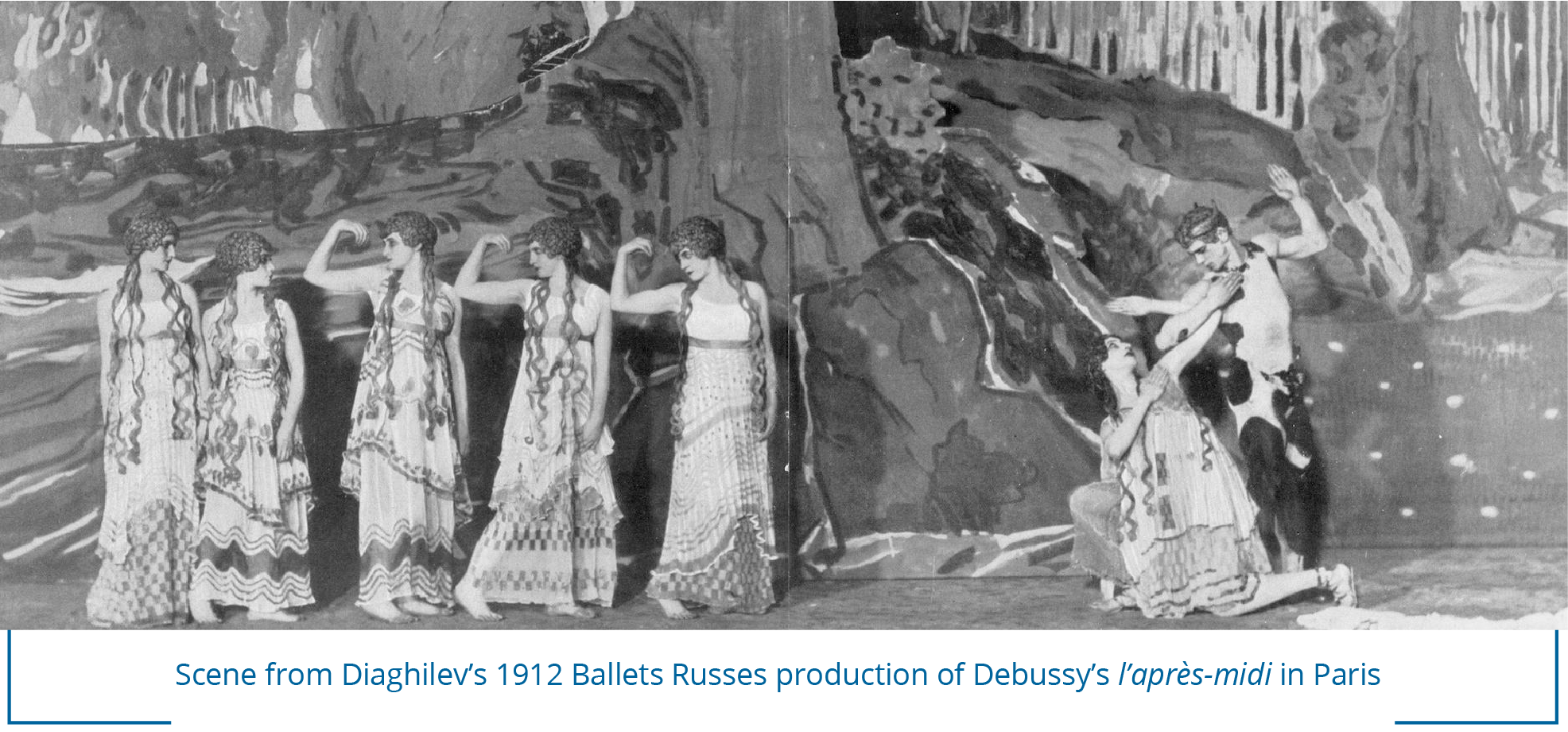PRÉLUDE À L’APRÈS-MIDI D’UN FAUNE
Claude Debussy
(b. St Germain-en-Laye, France, August 22, 1862; d. Paris, March 25, 1918), arr. Todd Palmer
Composed 1891-4; arranged 1920; 10 minutes
.png)
Debussy described his Prélude à l’après-midi d’un faune, written in the early 1890s, as a ’general impression’ of a poem by Stéphane Mallarmé. Over a half century later, French composer Pierre Boulez nominated Debussy’s evocative tone poem as the awakening of modern music, in which the very idea of musical form itself is challenged and overthrown. Debussy’s score has as many measures as French Symbolist poet Mallarmé’s poem has lines. The score evolves out of the opening flute melody—a beautifully evocative phrase that allows for a kaleidoscope of subtly different interpretations. The melody in turn grows out of Mallarmé’s line “A single line of sound, aloof, disinterested” and in it lies the heartbeat of the score. Each time the flute melody appears, we hear something new, a new shade of color in Debussy’s improvisatory-like score. Like Mallarmé, Debussy avoids direct statement. His ever-shifting music suggests and alludes, while its mood, sensuously erotic, floats dreamlike between states of wakefulness and reverie.

The arrangement on this performance is by Benno Sachs (1894-1920), an otherwise unknown name to the musical community, mainly because he trained as a Viennese physician for whom music was a hobby. His creative arrangement, however, was made for the fourth and final season of Arnold Schoenberg’s Verein für musikalische Privataufführungen (Society for Private Musical Performances). In this 1921-2 season, as many as 16 chamber arrangements by Schoenberg’s pupils were scheduled for the monthly performances by an orchestra made up of a few wind instruments, a string quintet, piano and harmonium. Schoenberg’s aim with the reduced forces was to “allow for a clarity of presentation and a simplicity of formal enunciation often not possible in a rendition obscured by the richness of orchestration.” In other words, to again quote Schoenberg, “complicated works would be clearly presented, divorced from their coloristic properties.” The arrangement does, indeed, throw new light on Debussy’s evocative score, as Schoenberg intended, and further offers today’s audience an opportunity to listen from the ’inside-out,’ peeling back the layers to appreciate how a masterpiece is constructed.
